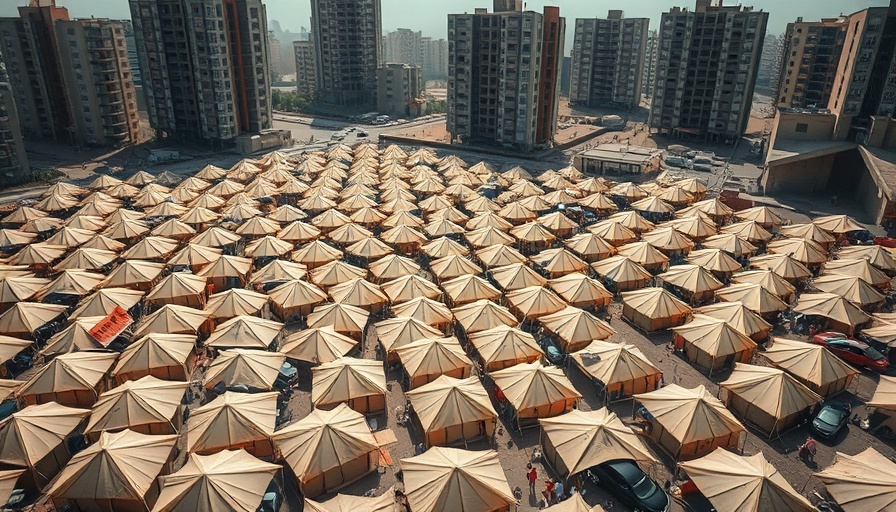
The Controversial Post-War Plan for Gaza: An Overview
The U.S. is proposing an ambitious plan aimed at administering Gaza for at least a decade following recent conflicts that have intensified the humanitarian crisis in the enclave. This initiative is highlighted in a report by the Washington Post, shedding light on the complexities and risks that come with it. With a projected population of 2 million, the plan recommends the temporary relocation of Gaza's residents, framing it as a necessary step to facilitate rebuilding the area as a tourist resort and manufacturing hub.
The Mechanics Behind the Plan
According to the details released, the U.S.-backed initiative, referred to as the "Gaza Humanitarian Foundation" (GHF), envisions the establishment of what are termed "Humanitarian Transit Areas." These would be large-scale camps meant to house displaced families either within Gaza or potentially in neighboring countries. The proposal seeks to offer each departing Palestinian financial support in the form of a $5,000 cash incentive, alongside subsidies to cover four years of rent, and provisions for a year's supply of food. Such incentives are designed to ease the burden of relocation, albeit alongside controversial discussions about land ownership and redevelopment.
Concerns and Counterarguments Surrounding Relocation
This plan has sparked significant debate, mainly regarding the ethics of forcing a population to leave their homes under the guise of economic opportunity. Critics argue the approach could lead to more displacement and suffering among Gaza's residents. The multifaceted situation raises questions about the effectiveness of such measures in genuinely addressing the long-term humanitarian needs of the population, especially given the historical context of conflict in the region.
Future Predictions and Insights: Gaza's Potential as a Resort and Hub
Proponents of the plan envision a transformed Gaza, one that could function as a vibrant resort and beating economic heart of the region if implemented correctly. Success hinges on effective international cooperation, economic investment, and stable governance. The future of such initiatives raises questions about sustainability and the kind of economic opportunities that could emerge for Gazans post-relocation, infused by the concept of tourism and manufacturing.
Exploring the Context: Understanding Gaza’s Population and Stability Risks
It’s essential to consider the social fabric of Gaza's population. As any plan moves forward, it must account for cultural identities, historical grievances, and the emotional ties many Palestinians have to their homeland. The potential for returning to a troubled yet familiar home must not be overlooked, as dislocations often yield feelings of loss and instability.
Conclusion: Reflection on the Path Forward
While the U.S. plan proposes significant changes to Gaza, it remains uncertain whether such changes can lead to lasting stability and positive outcomes for the region's residents. Palestinian voices, hopes, and grievances must be central to discussions going forward, ensuring any future endeavors prioritize the dignity and rights of individuals affected by these transformative processes.
In the realm of humanitarian assistance and post-conflict rebuilding, it's crucial for those involved to consider not just the economic possibilities, but also the human realities that underpin such plans. We encourage readers to stay informed about the developments in this complex issue and to engage in discussions that promote understanding, compassion, and forward-thinking strategies for peace.
 Add Row
Add Row  Add
Add 



Write A Comment